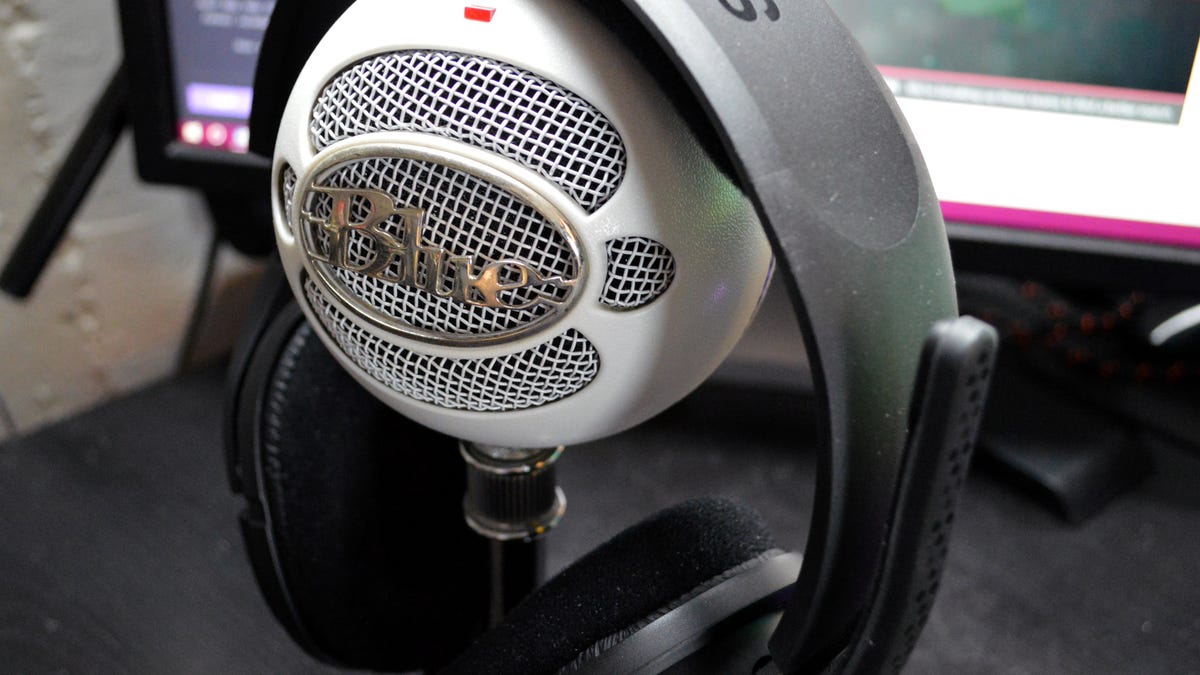 Why You Can Trust CNET
Why You Can Trust CNET Twitch streaming from your PC guide: Getting your hardware together
Before you even sign up for a Twitch account, it's a good idea to round up some equipment.

A good microphone and headset will help while streaming on Twitch.
Twitch streaming: Anybody can do it. But that doesn't mean you can do it from an ultrabook.
You will need some basic equipment before you start streaming, including a decent gaming computer (it needs to be able to run games and handle streaming simultaneously), a headset, a microphone and a webcam. You don't need to spend hundreds or thousands of dollars on your streaming set up, but you'll want to aim for quality equipment -- not dollar-store bargains -- that you won't need to upgrade immediately. Here's a rundown of what you should be looking for.
A good computer
Not all computers can handle gaming -- let alone gaming and streaming at the same time. You'll need a reasonably powerful computer with a discrete graphics card that (ideally) supports DirectX 10. Luckily, DirectX 10 is an older standard (Windows 10 supports DirectX 12), so any moderately powerful graphics card made in the last five years should be fine. If you're not sure what kind of graphics card you have, you can find out on a Windows PC by opening the Control Panel and going to Device Manager > Display adapters.
Twitch recommends your computer have an Intel Core i5-4670 processor or AMD equivalent, at least 8GB of DDR3 SDRAM and Windows 7 Home Premium. To find your processor and memory information, open the Control Panel and go to System. If you're not sure if your processor is powerful enough, compare it against this master list.
A microphone and headset
Streaming is about more than just playing a video game. The best streamers are also engaging -- they inject interesting, funny and witty commentary into their streams as well as interact with their viewers. The best way to communicate with viewers is via voice (versus typing -- you're using your keyboard to play the game), so you'll need a quality microphone. You'll also need a decent quality headset that allows you to hear your game's sounds without sending feedback to the mic.
I don't recommend using a microphone that's built into your laptop or webcam, because a microphone that's far away from your mouth (and close to your keyboard) will pick up excess noise like keyboard clicks. If you're on a budget, you'll probably find better deals on standalone microphones rather than headsets with built-in mics. The Zalman ZM-Mic1 is a cheap-but-good microphone that clips onto your headset's wire.
If your computer does not have a separate microphone jack, you can buy a microphone that plugs into a USB port, such as the Blue Snowball microphone, which can be found online for under $50 (converting roughly to £35 in the UK or AU$70 in Australia).
Webcam
A webcam is technically optional, but people enjoy seeing what you look like and how you react to what happens on screen -- your stream will be far more popular if you show your face, even if you're not model-esque.
There are a couple of things to keep in mind when you go searching for the perfect webcam. First, your webcam feed will be relatively small on screen, so splurging on a 1080p webcam is probably a waste -- nobody will be able to see how high-res your face is when it's barely 1/16 the size of the screen. 1080p isn't going to make your stream look worse, but 720p is the highest resolution you really need.
Second, some webcams have built-in hardware encoders. If your webcam doesn't have a built-in encoder, the burden of compressing the stream will fall on your computer. This is fine, but it does take up some of your computer's resources. Check out this list of webcams that have onboard encoding (using the codec H.264, which is the only video codec Twitch currently supports).
The Logitech HD Pro Webcam C920 is a popular choice for streamers; it has onboard encoding and can be found online for around $60 (£60 in the UK or AU$158 in Australia).

